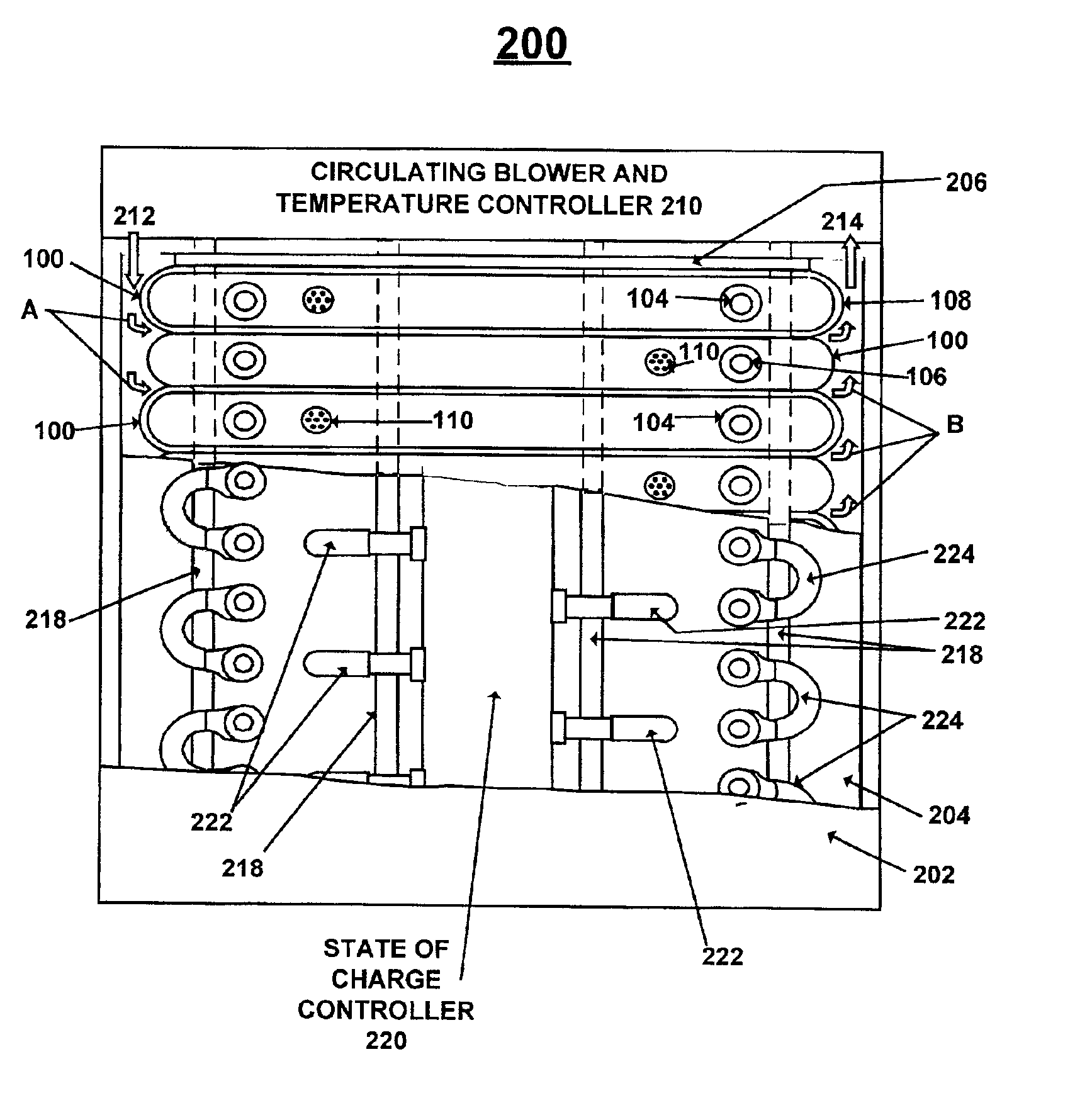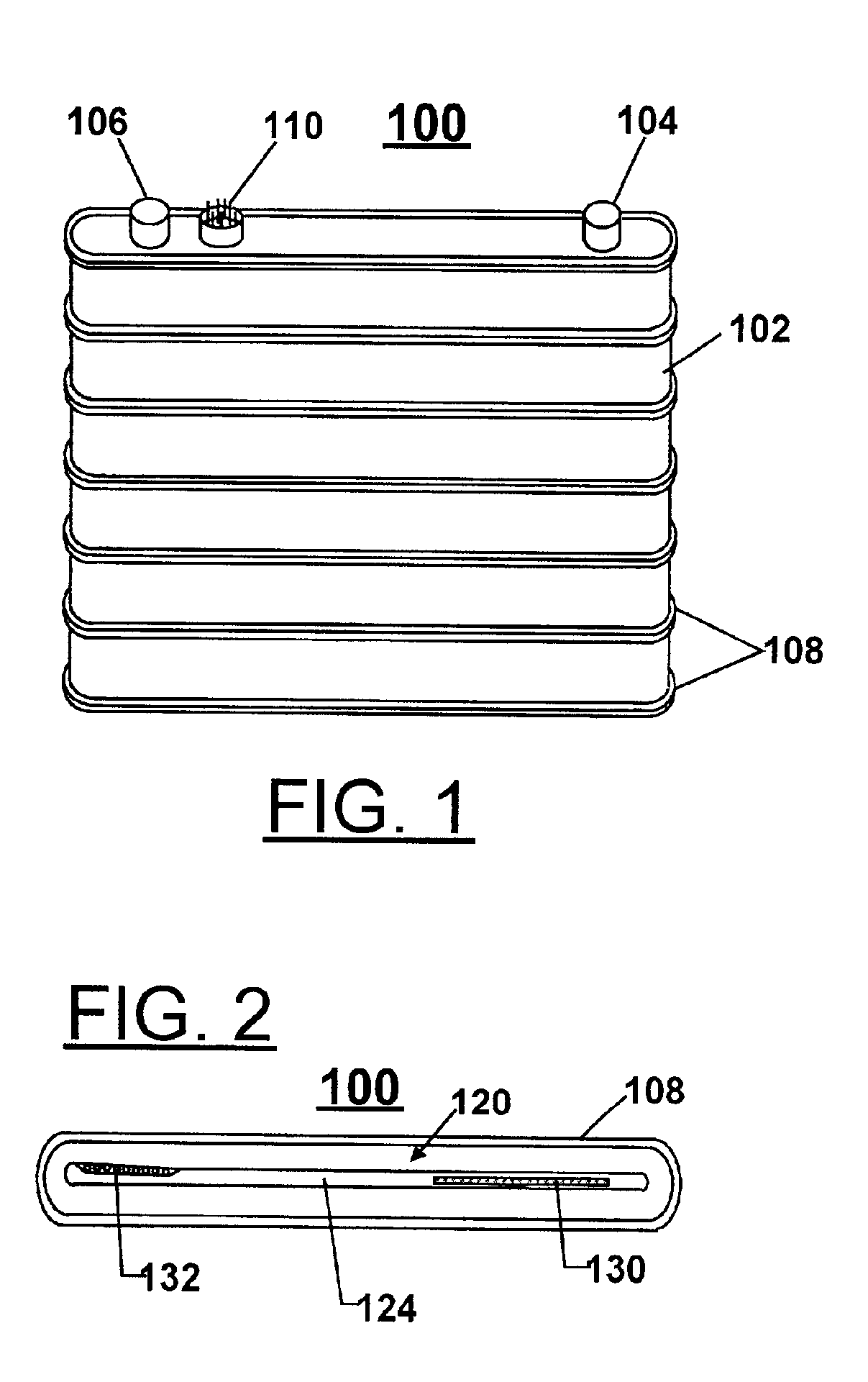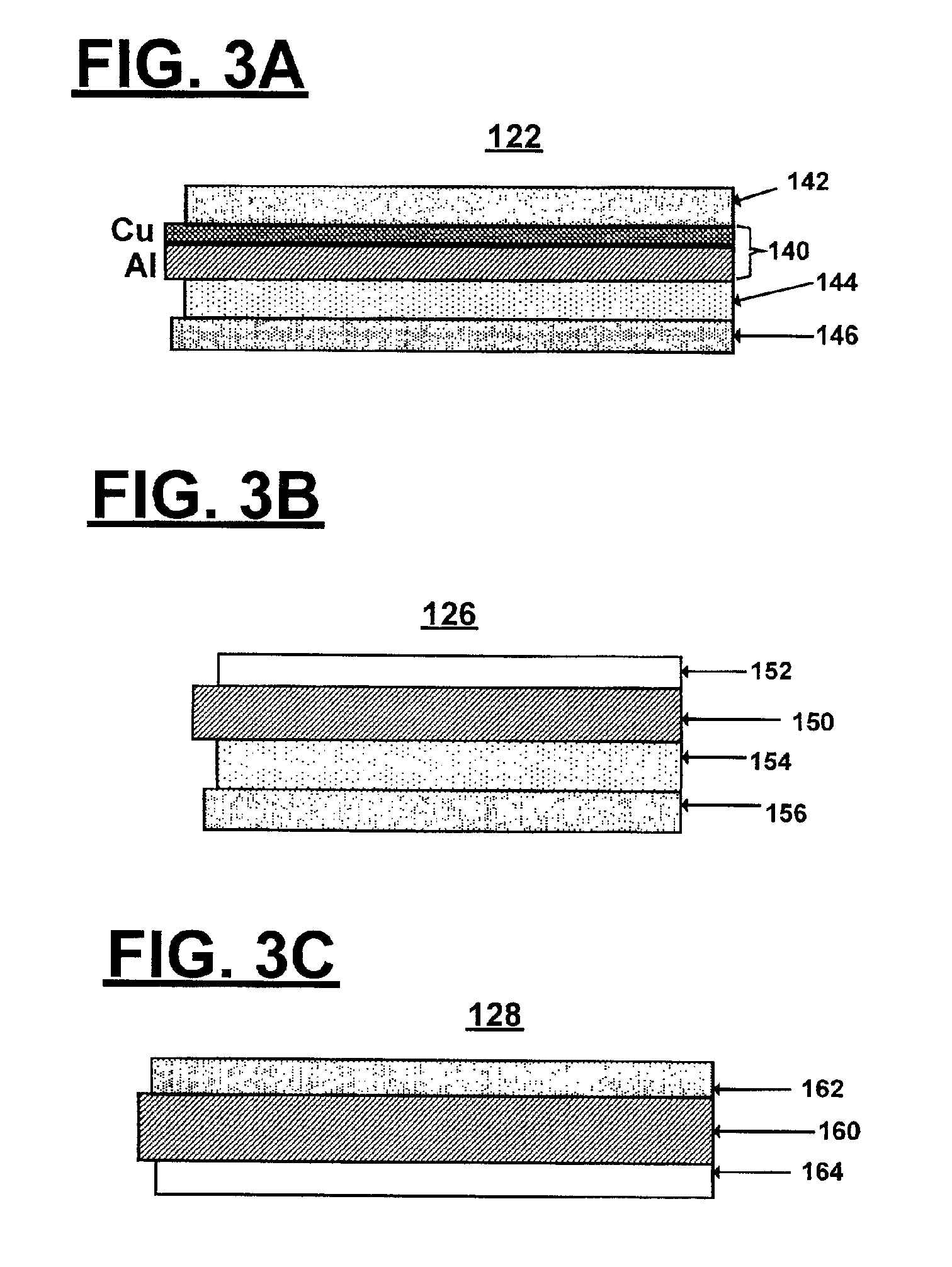Wound bipolar lithium polymer batteries
a lithium polymer battery, bipolar technology, applied in the direction of wound/folded electrode electrodes, flat cell grouping, sustainable manufacturing/processing, etc., can solve the problems of dendrite formation on charging the cell, rapid destructive corrosion reaction, and low lithium-ion conductivities, so as to improve the high-power lithium polymer battery substantially, the effect of negative
- Summary
- Abstract
- Description
- Claims
- Application Information
AI Technical Summary
Benefits of technology
Problems solved by technology
Method used
Image
Examples
Embodiment Construction
In accordance with features of the invention, a lithium polymer bipolar high power battery is provided that is appropriate for applications requiring high voltage, high power, and limited capacity. Even with the new electrolytes the area-specific impedance is expected to be 50 to 75 ohm-cm2 at 20° C., two or three times higher than for cells with liquid electrolytes. Therefore, the cells must have a large area even though the capacity is limited. In accordance with features of the invention, the large cell area is accomplished by making many wrappings of thin cell layers around a core.
Having reference now to the drawings, in FIGS. 1, 2, 3A, 3B, 3C and 3E, there is shown an exemplary lithium polymer bipolar stack assembly generally designated as 100 in accordance with the preferred embodiment. The illustrated lithium polymer bipolar stack assembly 100 includes an eight cell arrangement; however, it should be understood that the present invention is not limited to the illustrated eigh...
PUM
 Login to View More
Login to View More Abstract
Description
Claims
Application Information
 Login to View More
Login to View More - R&D
- Intellectual Property
- Life Sciences
- Materials
- Tech Scout
- Unparalleled Data Quality
- Higher Quality Content
- 60% Fewer Hallucinations
Browse by: Latest US Patents, China's latest patents, Technical Efficacy Thesaurus, Application Domain, Technology Topic, Popular Technical Reports.
© 2025 PatSnap. All rights reserved.Legal|Privacy policy|Modern Slavery Act Transparency Statement|Sitemap|About US| Contact US: help@patsnap.com



